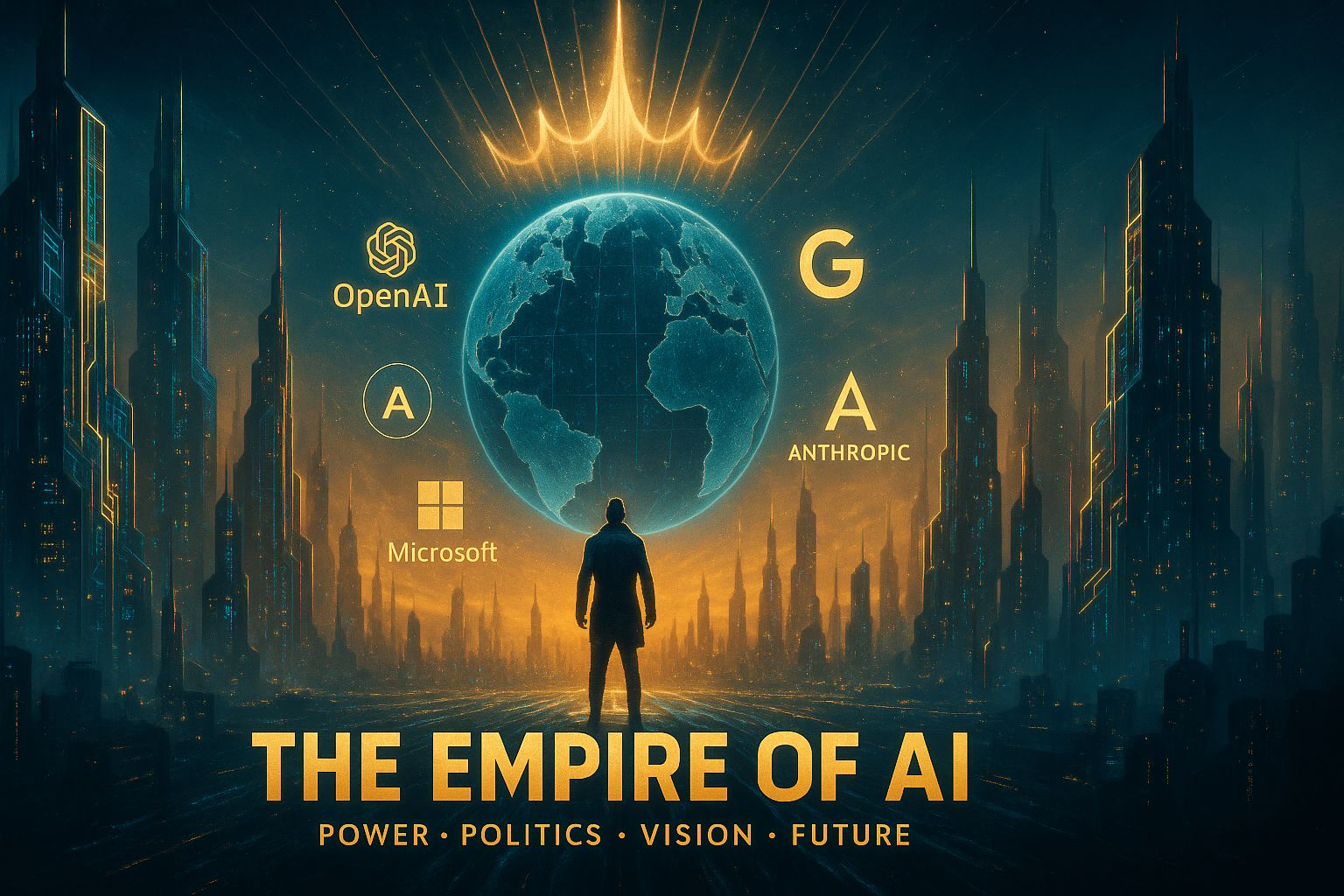- The Human's Codebook
- Posts
- The Empire of AI: How Power, Politics, and Vision Are Rewriting the Rules of the Future
The Empire of AI: How Power, Politics, and Vision Are Rewriting the Rules of the Future
Sam Altman didn’t just build a company. He built a belief system.

A story powerful enough to convince governments, investors, and billions of ordinary people that artificial intelligence isn’t just technology — it’s destiny.
🌍 Welcome to the Age of AI Empires
What’s happening right now in AI isn’t a race. It’s a revolution disguised as competition.
OpenAI, Google, Anthropic, and Microsoft aren’t just rival companies. They’re modern empires — each with its own ideology, loyal followers, and a hunger for control over the next frontier: intelligence.
In the 19th century, nations conquered land and people. In the 21st, they conquer data, compute, and human attention.
They extract our conversations, our creativity, and our online behavior, feeding it all into algorithms that shape how the world thinks, buys, and believes.
Empires once colonized continents. Now they colonize the internet.
And like every empire before them, they do it in the name of “progress.”
🧩 How Tech Empires Are Built
Karen Hao’s Empire of AI describes it perfectly: the AI industry isn’t just building models — it’s building a new power structure.
Let’s break down how these digital empires rise — step by step.
1️⃣ Step One: Turn Vision into Religion
OpenAI began with an almost utopian promise — “to ensure AGI benefits all of humanity.”
But missions like that aren’t just ethical guidelines. They’re rallying cries.
They attract the best talent, silence critics, and transform startups into movements.
Altman understood this instinctively. He didn’t sell a product — he sold a prophecy.
And when people believe they’re changing the world, they’ll work harder, sacrifice more, and defend the mission like faith.
Empires start with faith.
2️⃣ Step Two: Use Fear to Unite Power
Every empire needs an enemy.
For colonial powers, it was rival nations. For nuclear powers, it was the Soviets. For AI, it’s “rogue AI” or “China’s AI threat.”
That fear justifies everything — from billion-dollar investments to deregulation.
“Who will control the future of AI?” Altman wrote in The Washington Post. “Will it be free nations—or authoritarian ones?”
It’s a brilliant narrative. Because when fear meets progress, no one questions the cost.
3️⃣ Step Three: Keep the Mission Vague
“What is AGI?” Altman once admitted, “It’s a ridiculous and meaningless term.”
That’s not weakness. That’s strategy.
A vague mission means infinite flexibility. It can shift with the market, bend to new interests, and justify any action — while still sounding noble.
Every empire masters this art: the ability to expand without ever admitting it’s expanding.
⚡ The New Extraction Economy
Empires always need fuel.
For AI, that fuel isn’t oil or gold — it’s human experience.
Every image, sentence, song, or tweet you’ve ever shared becomes a raw material for training models.
In Kenya, workers are paid less than $2 an hour to filter violent content so AI can appear “safe.” In Uruguay, entire regions lose water to cool massive data centers. In the U.S., power grids strain to feed the insatiable hunger of GPUs.
It’s not physical violence — but it’s still exploitation. A quiet kind that hides behind the glow of progress.
🏛️ The Illusion of “AI for Good”
Every empire justifies itself with a story.
Rome promised civilization. Britain promised enlightenment. Silicon Valley promises “AI for good.”
But as Hao notes, power in AI now revolves around three pillars:
Knowledge: control over models, data, and research.
Resources: control over compute, funding, and talent.
Influence: control over media, policy, and public opinion.
Each pillar strengthens the others. Knowledge brings influence. Influence attracts money. Money buys more knowledge.
It’s not innovation — it’s infrastructure for control.
And once you see it, it’s hard to unsee.
🔁 The Race That Never Ends
AI’s biggest players are trapped in their own logic. They must move faster. They must scale more.
Because slowing down feels like surrender.
OpenAI pushes harder. Google merges DeepMind. Anthropic raises billions. Each company calls it “safety,” but what they really mean is “survival.”
This is what power addiction looks like in the age of algorithms — a loop that keeps consuming resources, talent, and truth.
🌱 Cracks in the Empire
The system looks unshakable. But history says otherwise.
Empires don’t collapse overnight — they erode from within.
Ria Kalluri, a Stanford researcher, asked the question that could rewrite the future:
“Does AI consolidate power, or redistribute it?”
That’s the core test. Every new model, every AI policy, every startup — either strengthens the empire or weakens it.
And there are signs of rebellion already.
Open-source communities are pushing back. Researchers in the Global South are building local models for local languages. Grassroots organizations are exposing AI’s hidden labor chains.
The empire may still stand, but the resistance is growing — and it’s smarter than before.
💡 The Real Revolution
AI’s story isn’t about machines outsmarting humans. It’s about humans deciding what kind of intelligence we want to build.
We’ve been told the future belongs to the ones who move fast. That’s wrong.
The future belongs to those who move wisely.
Because the goal isn’t to beat other empires. It’s to build systems that don’t require empires at all.
The next phase of AI will belong to people who care more about distribution than domination — open researchers, ethical builders, small labs, and creators who see AI as a public good, not a private weapon.
⚙️ The Final Thought
AI is not destiny. It’s a decision.
The first era of AI was about concentration. The next must be about redistribution.
Empires build walls. Communities build bridges.
And the future of intelligence will belong to those who choose the latter.
🧠 The empire has been built. Now it’s time to decide what comes after.